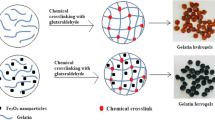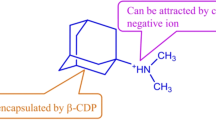Abstract
Purpose. The purpose of this study was to elucidate the in vitro behavior of anionic gels as formulation matrices for electrically-modulated drug delivery. Agarose and combinations of agarose with other anionic polymers (carbomer 934P; xanthan gum) were selected and tested to evaluate their potential for drug delivery.
Methods. Electrical current was applied by an automatic crossover power supply to minimize the current fluctuation. Hydrocortisone was selected as the model drug in order to minimize electrostatic interference with drug transport. Syneresis and drug migration were evaluated as a function of current application time and the intensity of electrical current.
Results. The data show that electrical current strength and gellant content can affect both the syneresis and drug migration. A linear correlation was found between hydrocortisone loss and mass loss via the exudate. Moreover, in agarose-carbomer 934P gel systems, cumulative gel mass loss is a linear function of time at low intensities of electrical current (e.g., 0.5 mA and 1 mA). However, hydrocortisone distribution, after electrical application, is relatively asymmetric in those agarose-carbomer 934P gels (and in agarose-xanthan gum gels) in contrast to gel matrices containing only agarose.
Conclusions. In this study, the use of carbomer 934P in conjunction with agarose enables the formulator to achieve zero-order release with electrical application. Increased anisotropicity of a gel system due to the application of electrical current could alter the effectiveness of a drug delivery system.
Similar content being viewed by others
REFERENCES
J. E. Riviere, B. Sage, and P. L. Williams. J. Pharm. Sci. 80:615–620 (1991).
D. B. Bommannan, L. Leung, and R. O. Potts. Proceed. Intern. Symp. Control. Rel. Bioact. Mater. 20:90–91 (1993).
S. P. Schwendeman, V. Labhasetwar, and R. J. Levy. Pharm. Res. 12:790–795 (1995).
P. Glikfeld, C. Cullander, R. S. Hinz, and R. H. Guy. Pharm. Res. 5:443–446 (1988).
P. G. Green, R. S. Hinz, A. Kim, F. C. Szoka, Jr., and R. H. Guy. Pharm. Res. 8:1121–1127 (1991).
E. Neumann, A. E. Sowers, and C. A. Jordan, Eds., Electroporation and Electrofusion in Cell Biology. Plenum, New York, 1989.
M. R. Prausnitz, V. G. Bose, R. Langer, and J. C. Weaver, Proceed. Intern. Symp. Control. Rel. Bioact. Mater. 19:232–233 (1992).
A. K. Banga and Y. W. Chien. Pharm. Res. 10:697–702 (1993).
Y. B. Bannon, J. Corish, and O. I. Corrigan. Drug Dev. Ind. Pharm. 13:2617–2630 (1987).
R. Groning. Int. J. Pharm. 36:37–40 (1987).
J. B. Phipps, R. Haak, S. Chao, S. K. Gupta, and J. R. Gyory. Proceed. Intern. Symp. Control. Rel. Bioact. Mater. 21:320–321 (1994).
K. Sawahata, M. Hara, H. Yasunaga, and Y. Osada. J. Control. Release 14:253–262 (1990).
S. H. Yuk, S. H. Cho, and H. B. Lee. Pharm. Res. 9:955–957 (1992).
B. Kishi, M. Hara, K. Sawahata, and Y. Osada. In DeRossi et al. (ed.), Polymer Gels, Plenum Press, New York, 1991, pp:205–216.
T. Kurauchi, T. Shiga, Y. Hirose, and A. Okada. In DeRossi et al. (ed.), Polymer Gels, Plenum Press, New York, 1991, pp:237–246.
A. Serres, M. Baudys, and S. W. Kim. Pharm. Res. 13:196–201 (1996).
T. Tanaka, I. Nishio, S.-T. Sun, and S. Ueno-Nishio. Science 218:467–469 (1982).
R. Tomer, D. Dimitrijevic, and A. T. Florence. Proceed. Intern. Symp. Control. Rel. Bioact. Mater. 21:648–649 (1994).
T. Tanaka. Gels. Sci. Amer. 244:124–138 (1981).
M. J. Pikal. Pharm. Res. 7:118–126 (1990).
S. M. Sims, W. I. Higuchi, and V. Srinivasan. Pharm. Res. 9:1402–1409 (1992).
Author information
Authors and Affiliations
Rights and permissions
About this article
Cite this article
Hsu, CS., Block, L.H. Anionic Gels as Vehicles for Electrically-Modulated Drug Delivery. I. Solvent and Drug Transport Phenomena. Pharm Res 13, 1865–1870 (1996). https://doi.org/10.1023/A:1016045427545
Issue Date:
DOI: https://doi.org/10.1023/A:1016045427545




